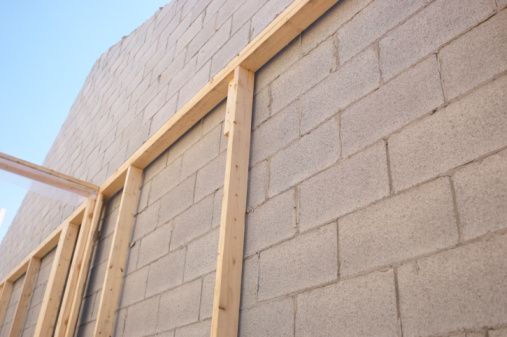Furring A Concrete Wall

In concrete wall applications furring channel is installed vertically to the wall surface using concrete nails or power driven fasteners.
Furring a concrete wall. How to install furring strips for drywall. Step 1 preparation. Each stud is naturally flush with the surrounding woodwork. In most applications vertical anchoring is easier.
Position the lines 3 inches from the wall at the top and bottom at the center point of the wall and in between the 3 inch lines and centerline. When furring out a wall with wood studs you ll want to space out your furring strips about the same way you ll do with concrete or brick but you ll need to make sure the vertical lines that you draw are directly over the studs. What is a furring strip. Covering bare studs the wood framework that forms a wall with drywall is simple.
In order to fasten anything to a masonry wall you need to use a concrete anchor. Furring strips are long thin strips of metal or wood that create a support system for a finished surface in a room. Installing furring strips on a masonry wall reduces the number of holes punctured into the cinder block which weakens the block. Clarkdietrich furring channel is a hat shaped corrosion resistant framing component used to furr out masonry walls and ceiling assemblies.
For some homes this is 16 inches apart. They simply nail it into the wall and the furring strips. Furring strips are typically 1 x 2 or 1 x 3. They need to be spaced right set plumb and attached securely to the wall.
Using a hammer drill and 3 16 inch masonry bit put up horizontal 1x3 spruce boards by drilling 5 inch deep pilot holes through the wood foam and concrete. Generally these strips are applied directly to the walls with concrete screws. The challenge then is to install the furring strips correctly. Furring strips are long thin pieces of wood nailed to cinder blocks in order to support a finished wall.
Once the insulation is inserted many carpenters use gypsum board to cover the insulation. Gypsum panels are then screw attached to the furring channels. To accomplish this you may need a few instructions as well as the right materials and tools. Excess holes will also allow water to seep through the cinder block walls.
Most carpenters i know will fasten furring strips to the wall first then apply a wall finish over the strips. The furring strips and plywood give me 1 1 4 material to mount heavy objects like cabinets and pipe clamps to.



















